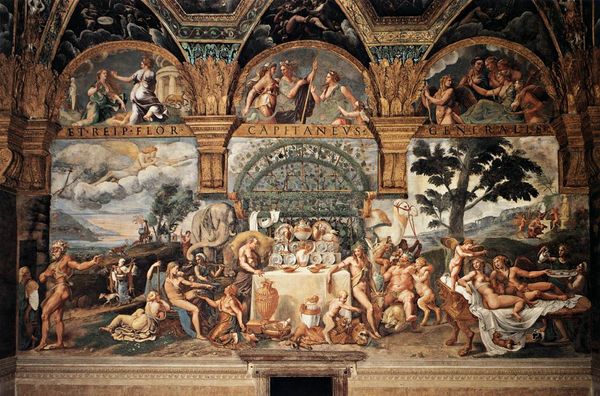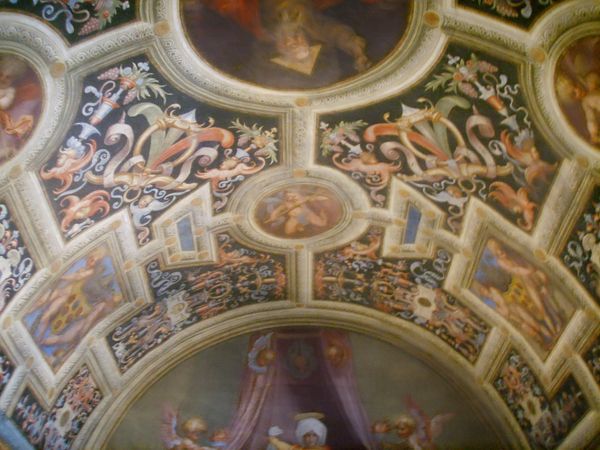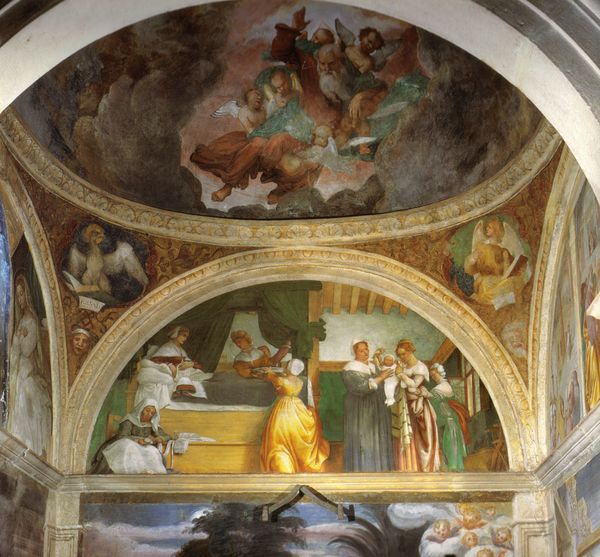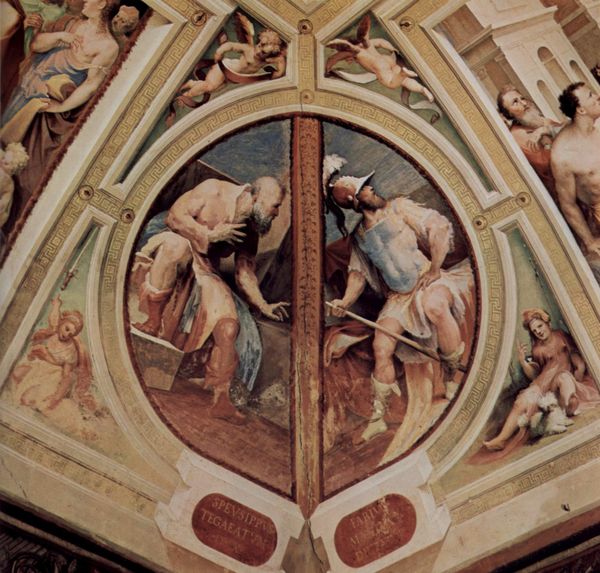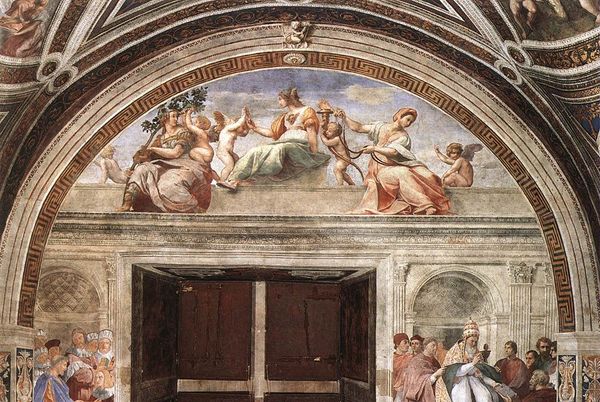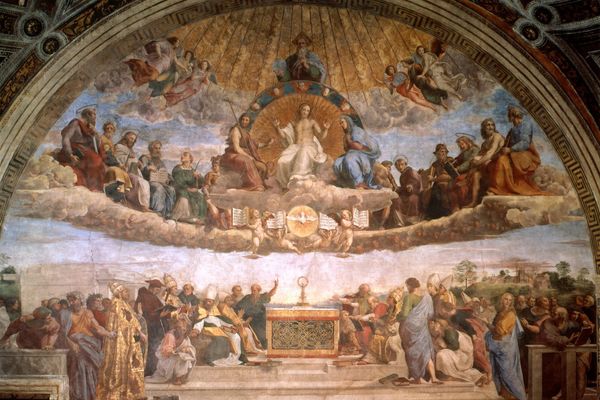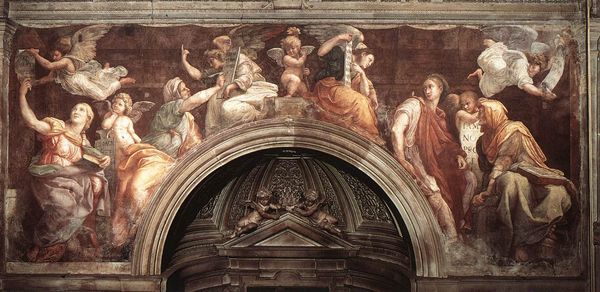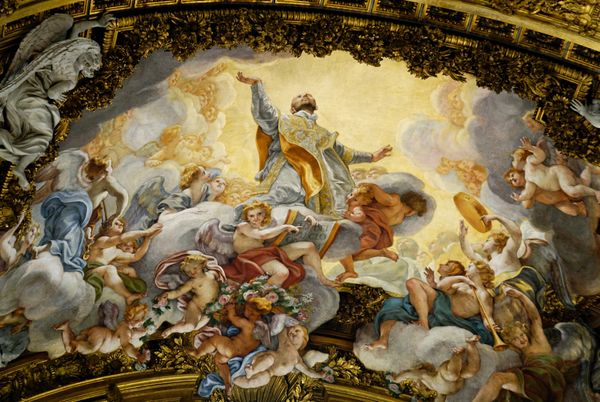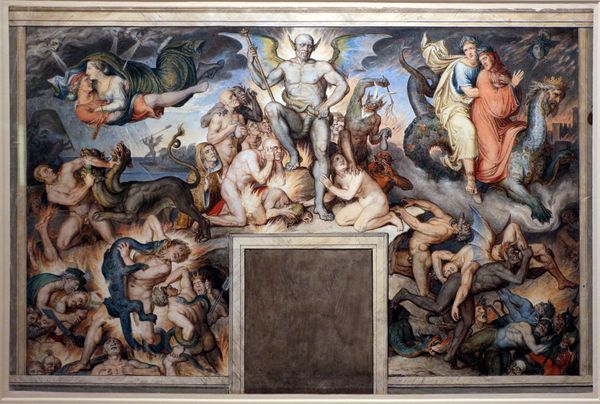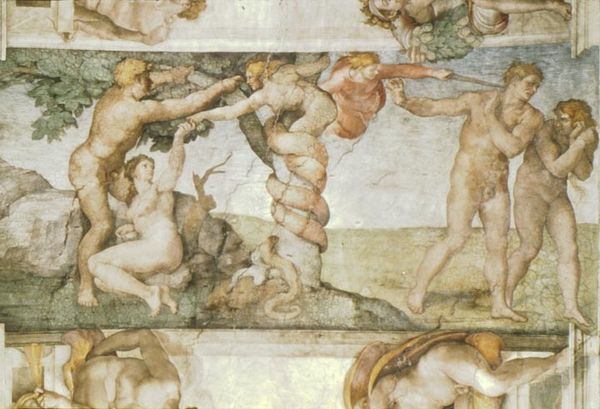
painting, fresco
#
high-renaissance
#
allegory
#
painting
#
sculpture
#
holy-places
#
figuration
#
historic architecture
#
form
#
fresco
#
traditional architecture
#
line
#
history-painting
#
italian-renaissance
Copyright: Public domain
Painted circa 1518 by Raphael and his workshop, the Ceiling of the Loggia of Psyche is a fresco, meaning pigment applied to wet plaster. What’s really fascinating here is the scale and collaborative nature of its production. Raphael, a celebrated master, would have designed the compositions. But the actual work of preparing the plaster, mixing pigments, and painting was likely divided among numerous assistants, each with specialized skills. The fresco medium demands speed and precision, requiring a well-organized team to execute such a large and complex design. The materiality of the fresco itself—the way the colors are bound into the wall, the subtle variations in texture—speaks to the labor involved in its creation. We should appreciate that this wasn't just the product of one genius, but of collective craftsmanship. Understanding this gives us a deeper insight into the social context of art production in the Renaissance, challenging the romantic notion of the solitary artist.
Comments
No comments
Be the first to comment and join the conversation on the ultimate creative platform.
